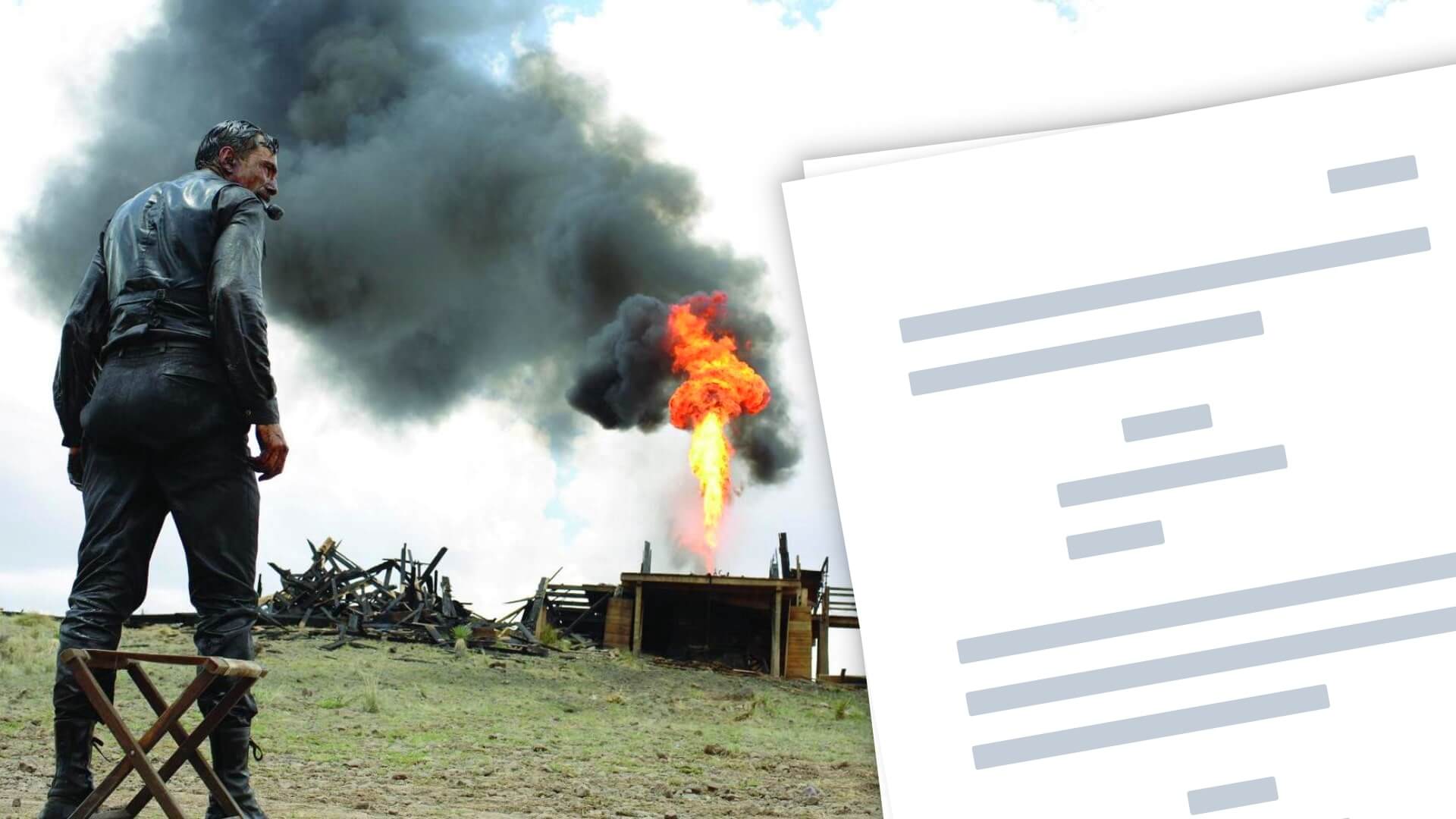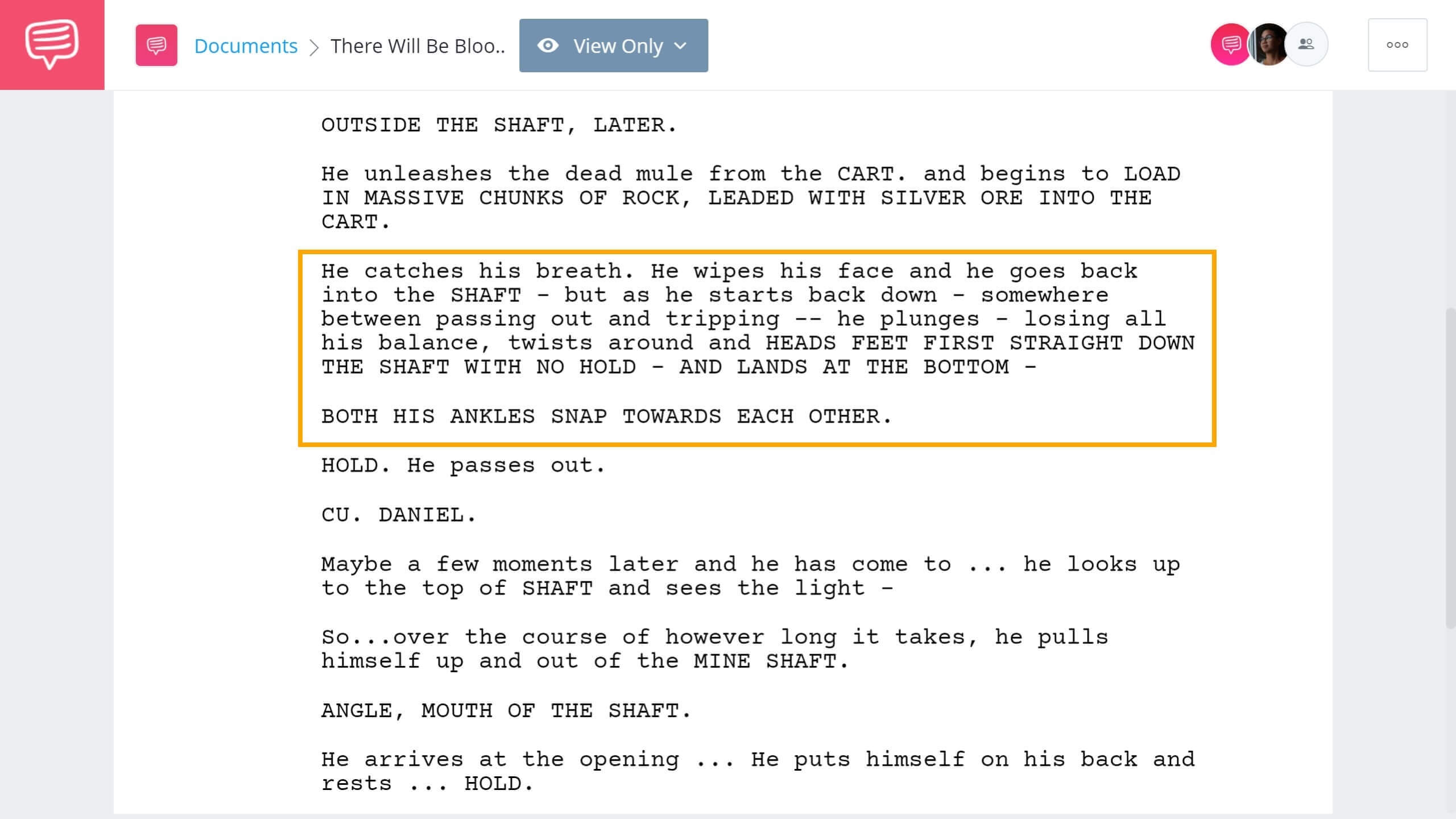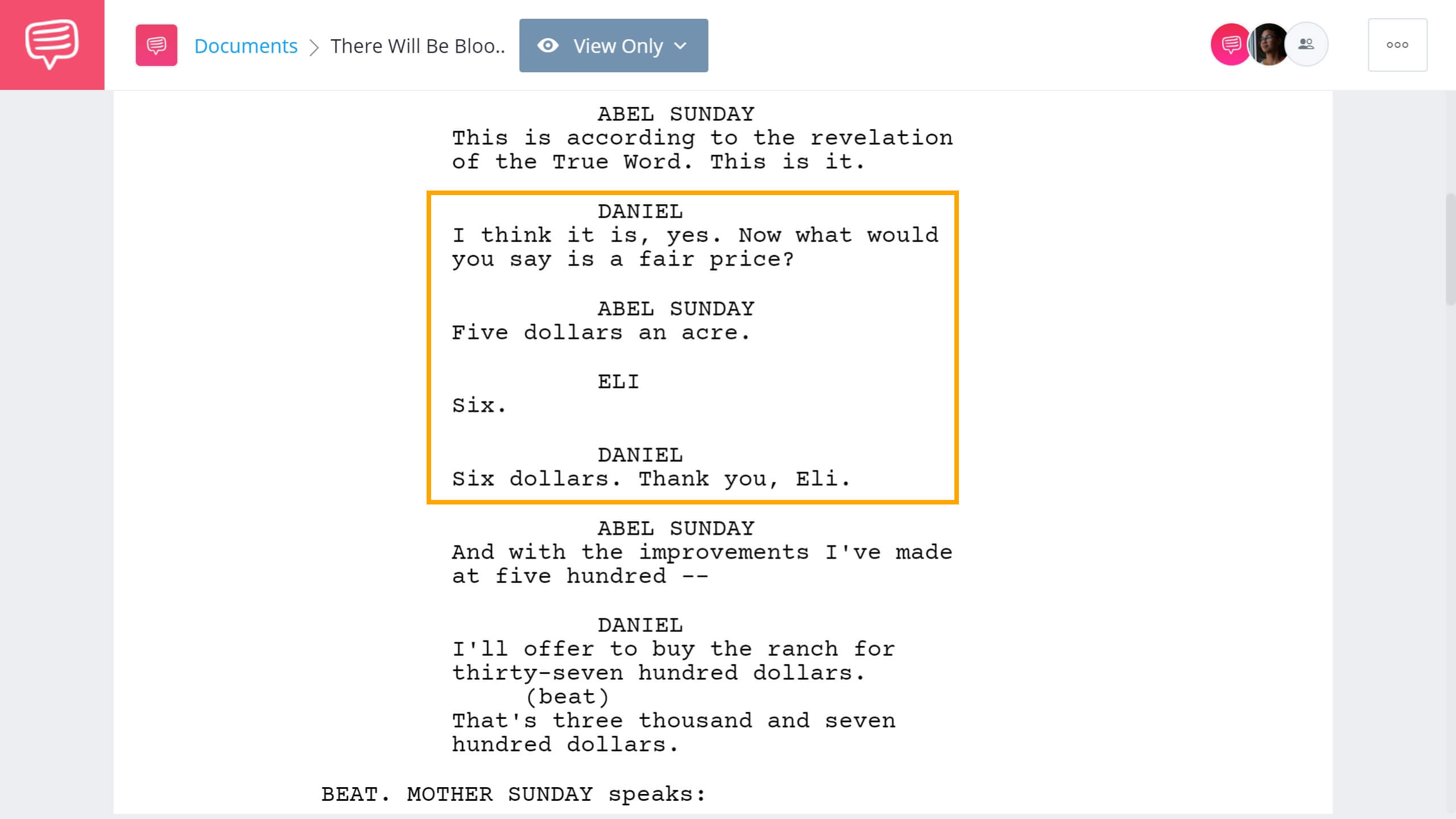Auteur filmmaker Paul Thomas Anderson is an ideal example of a storyteller that has grown and matured with time and practice. His fifth feature film There Will Be Blood is a capstone to the restrained, yet powerful storytelling ability he has come to possess with time. It also remains his most acclaimed film. What makes There Will Be Blood so great? As in every film, it all begins with the screenplay. Let’s analyze the different components of the There Will Be Blood script and how they all work together to tell an incredible, engaging story.
WHO WROTE the There Will Be Blood SCRIPT?
Written by Paul Thomas Anderson
Paul Thomas Anderson is an American auteur filmmaker who has written and directed eight feature films. His films span topics from the Golden Age of pornorgraphy in Boogie Nights to cult-like religions in The Master.
As an auteur writer/director, Anderson often explores a variety of characters through his films, all flawed in their own way. Anderson’s directing style consists of theatrical plot structures, bold visual styles, a memorable score, and powerful performances.
The There Will Be Blood script is partially adapted from the novel Oil! By Upton Sinclair and inspired by real life oil tycoon Edward Doheny.
Anderson has been nominated for eight Academy Awards, one Golden Globe, and has won Best Director at Cannes.
STORY BREAKDOWN
STRUCTURE OF There Will Be Blood SCREENPLAY
Here is the story structure for There Will Be Blood screenplay:
Exposition
Daniel Plainview seeks success on the frontier as a prospector and later as an oil man. When one of his workers dies in his oil well, Daniel adopts his child. He makes his way to towns with oil, propositioning the services of his oil business.
Inciting Incident
Paul Sunday meets Daniel at one of his oil wells. Paul barters with Daniel, selling him information about oil rich land that his family lives on at the Sunday Ranch.
Plot Point One
Daniel and his son, H.W., discover that Paul was not lying and proceed to buy the Sunday Ranch and the land around it. Eli, Paul’s twin, clashes with Daniel as he requests money for his church. They promise the town that they will benefit from the oil wells being built.
Rising Action
Oil erupts from the first oil well. H.W. is thrown from the blast and becomes deaf. Daniel struggles deciding what to do with his deaf son and partner. Eli demands money for his church from Daniel, but Daniel physically abuses him and refuses to pay.
Midpoint
A man meets Daniel, claiming to be his brother named Henry Plainview. Daniel enlists him as a worker and confides in him telling him he wants no one else to succeed. Daniel sends his son off to a boarding school by leaving him on the train with his associate.
Plot Point Two
Daniel discovers that Henry has lied and is not his brother. In fact, his brother died, and Henry attempted to take his place. After the man admits this, Daniel kills him. A man named Bandy, who’s land Daniel is trying to purchase, blackmails Daniel into being baptized at Eli’s church.
Build Up
The film jumps forward several years and we discover Daniel as a rich man in an empty mansion. He’s descended further into paranoia and madness. H.W. has married Mary Sunday and wants to start his own oil business. Daniel takes this news as betrayal, lashes out, and tells H.W. he is not his son.
Climax
Eli visits Daniel and propositions him to buy land to fulfill his own debts. Daniel agrees under the condition that Eli admits he is a false prophet. Eli does, but Daniel reveals he already drilled the oil of that land and has no interest in buying it. Daniel lashes out at Eli, abusing him first verbally, then physically.
Finale
Daniel kills Eli with a bowling pin. And finally exclaims the iconic final words of the film, “I’m finished.”
Related Posts
There Will Be Blood Opening Scene
There Will Be Blood’s visual opening
The first 19 minutes of the film and first 7 pages of the There Will Be Blood screenplay has no dialogue and is strictly visual. Why? Paul Thomas Anderson shows us the lengths that the character Daniel Plainview will take to succeed.
While the majority of the film exhibits Daniel as an already somewhat successful oil man, we see the trials and tribulations he had to face to get there and it is not pretty.
We brought a segment of the There Will Be Blood script into the StudioBinder screenwriting software to analyze it further. In the opening scene, we witness Daniel endure the physical hardship in order to get closer to success.
Rather than starting the film at the point where Daniel is already a successful oil man propositioning towns, PT Anderson shows us the struggles Daniel has gone through to get there. He builds the character of Daniel Plainview through his actions rather than what he says.
Later in the film, when Daniel describes himself as an oil man, we understand he does not just possess intelligence or charisma, but rather sheer will to succeed. Think about the following scene in which we first hear dialogue in the film nearly 20 minutes in. Had we not witnessed the opening of the film, what would we have thought of this character?
There Will Be Blood characters • “I am an oilman”
While the opening twenty minutes do not push the film’s main narrative forward, it establishes necessary character exposition visually. By relying on action over dialogue, PT Anderson deeply engages us and shows us who Daniel Plainview is before we see how he carries forward through the plot of the film.
There Will Be Blood characters
There Will Be Blood characters conflict
Films cannot function without some sort of conflict, whether it be internal or external conflict. Paul Thomas Anderson creates this conflict by antagonizing Daniel Plainview through Eli Sunday.
Daniel and Eli’s conflict represent the main themes of the film. Ambition vs. greed, God vs. wealth, and business vs. religion are all explored through their conflict.
Paul Thomas Anderson designed and wrote both characters to clash in a biblical way. From the very get go Eli antagonizes Daniel and Daniel reciprocates this. In this scene, Daniel makes an offer to buy the Sunday Ranch to Abel, but Eli persistently intervenes. PT Anderson directs this power struggle masterfully throughout the rest of the film.
There Will Be Blood screenplay pdf • Read the Eli vs. Daniel scene
The initial dialogue between Daniel and Abel quickly becomes a confrontation between Daniel and Eli. Every single scene the two are in is a bout for power and control. Why? The belief system of both characters clash tremendously, but both share an identical goal — to possess God-like power.
Because only one can hold that power in the town of Little Boston, they must take it from each other in every scene. When Eli confronts Daniel about the money he owes Eli’s church, Daniel lashes out verbally and physically.
PT Anderson directs the power dynamic through every available tool at his disposal. The dialogue, cinematography, production design, and performances are all used to communicate the shift in power. Take a look at our video analysis of this scene and how PTA masterful directs dominance and disgrace.
How PT Anderson Directs Dominance and Disgrace • Subscribe on YouTube
To put it simply, PTA creates an engine for conflict by creating two opposite characters that share an identical goal. The highly engaging feud between Daniel and Eli drives much of the film forward. PTA proves that fully fleshed out characters and thoughtful character development is key to creating engaging conflict.
There Will Be Blood ending
There Will Be Blood ends in tragedy
Religion is a huge theme that PTA explores throughout the film. Eli wields religion to possess power and Daniel is averse to it.
The iconic baptism scene of Daniel in Eli’s Church, is the first of two baptism scenes in the film. While the second one is not as obvious, the two scenes take place in exactly the same way. Both use religion to shift power from character to character.
Let’s take a look at the first scene in which Daniel is blackmailed into being baptized. Note how Eli flaunts his power over Daniel and controls what he says.
There Will Be Blood • Read the Daniel’s baptism scene
While this scene is memorable in and of itself, it perpetuates the story forward by coming full circle in the final scene of the film — Eli’s baptism. While it may not appear to be an obvious baptism like Daniel’s, it unfolds in the same exact way. When Eli returns to Daniel in the final scene of the film to ask for more money in exchange for land, Daniel agrees to the proposition.
However, he agrees on the condition that Eli admits that he is a false prophet and that God is a superstition. Let’s take a look at the final scene of the film. Again, note how Daniel controls what Eli says, how he repeats it, as well as how loud he exclaims the words.
There Will Be Blood ending • A False Prophet
The final scene serves as the climax of the film by bringing back the power struggle between Eli and Daniel through a second “baptism” scene. The feud must come to a resolution in the final scene and it does in a fatal way.
Another detail that critics point out is that the final words of the film by Daniel is “I’m finished” which are eerily similar to the last words of Christ himself “It is finished.” Coincidence? Hard to believe it would be when PT Anderson so intricately uses religion and power to express the conflict of the film.
Throughout the There Will Be Blood script, Paul Thomas Anderson proves that the power of a story can be in the details. The details of characters allow us to see the story through the lens that PTA wants us to. The details of where a conflict derives from in a story helps perpetuate it forward to create an incredibly memorable climax and ending.
Related Posts
UP NEXT
Read and download more scripts
Paul Thomas Anderson is an auteur with a masterful grip on screenwriting. If you want to continue reading screenplays, we have similar titles like Pulp Fiction, Inherent Vice, and Parasite in our screenplay database. Browse and download PDFs for all of our scripts as you read, write and practice your craft to become the next great screenwriter.




